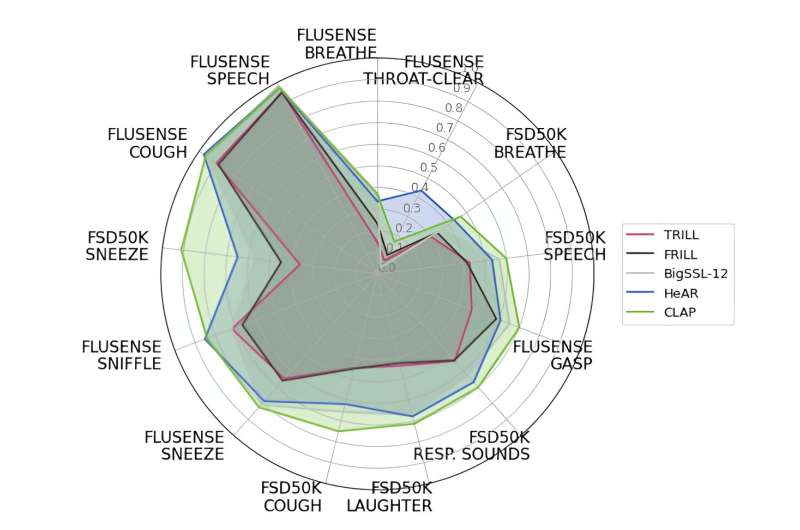March 26, 2024 report
This article has been reviewed according to Science X's editorial process and policies. Editors have highlighted the following attributes while ensuring the content's credibility:
fact-checked
preprint
trusted source
proofread
Google's HeAR AI system uses sounds to detect lung diseases, such as COVID-19

A team of AI researchers at Google Research, working with a pair of colleagues from the Center of Infectious Disease Research in Zambia, has developed a machine learning system aimed at diagnosing lung diseases based on the sounds of coughing. In their study, available as a preprint on the arXiv server, the group used YouTube videos to train the system.
The team at Google named their new system Health Acoustic Representations (HeAR)—they began working on it after health care workers reported that they had learned over time during the pandemic that they could often tell which patients had COVID-19 by the sound of their cough. Other researchers have been working on similar efforts, hoping to develop systems that could detect a wide variety of diseases based on the sound of a cough.
Google took a different approach to disease detection than the other teams. Instead of training an AI system using recordings with labels that identify a given disease, they used an approach much like that used to create LLMs such as ChatGPT.
In their system, a large number of recorded human sounds from YouTube, such as regular breathing, panting or coughing, were converted to spectrograms. The team then blocked certain parts of each one and prompted the AI to predict the missing portion, similar to the way LLMs learn to predict the next word in a sentence. The result was a foundation model, which, the researchers note, could be adapted for use in a wide variety of tasks.
In their case, the researchers used it to learn to detect tuberculosis or COVID-19. They then used a standard scale to compare the accuracy of HeAR with random guesses. They found it scored 0.739 on one data set and 0.645 on another for COVID-10 detection, and 0.739 on average for tuberculosis, which is better than results that have been obtained from other systems.
The research team acknowledges that much more work is required, but suggests that acoustic testing may someday make its way into doctor's offices, giving them yet another tool to diagnose patients with lung ailments.
More information: Sebastien Baur et al, HeAR—Health Acoustic Representations, arXiv (2024). DOI: 10.48550/arxiv.2403.02522
© 2024 Science X Network




















